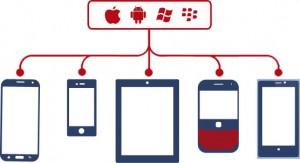Basic Principles of Mobile App Testing Companies
Most mobile app testing companies help to ensure correct and consistent work of software on target devices in order to make it user-friendly and optimize its performance and availability.
What do they offer?
Wise Investment
The companies are adequate, fair and transparent pricing and reporting mechanisms, therefore it becomes possible for the customers to manage their investments for quality assurance as efficiently as possible.
Accelerating Product Time To Market
Through flexible cooperation model, the firms can offer the earliest start date of a project, especially when the time factor is critical in delivery cases.
Comprehensive Coverage
Mobile testing companies can provide comprehensive mobile app / website test coverage (Native Apps), (Mobile Web) and help to make development of HTML5 hybrid mobile apps easier. They also offer end-to-end mobile testing solutions that may include data sources, Web services, and enterprise application integration.
Effective approach
Under circumstances of intense competition in the mobile app market, quality is a critical factor for the success of software applications. After all, in order to convince users who have found defects in the application, to try out this product again (needless to say, give positive feedback or recommendations on it), one should make truly titanic efforts.
Mobile testing organizations help both the manufacturing companies and mobile solutions marketers. Besides, they know how to avoid / overcome problems while delivering quality assurance solutions you may face during development, deployment and maintenance of mobile apps.
Mobile app testing process
In inspecting mobile apps, software testing service providers pay special consideration to the following aspects (these have influence on the perceived ease of use of the product or its piece):
- detecting functional defects with emphasis to usage of test cases and user journeys when carrying out testing process;
- analyzing the consistency of user interface (UI), identifying visual defects, user interface faults;
- verifying whether the responsive design can easily adapt to devices with different screen resolutions (different pixel density);
- checking how observable interaction between a user and an interactive application and a device’s response when an app is being used on it (slide effects, vibration, sound support for events).


